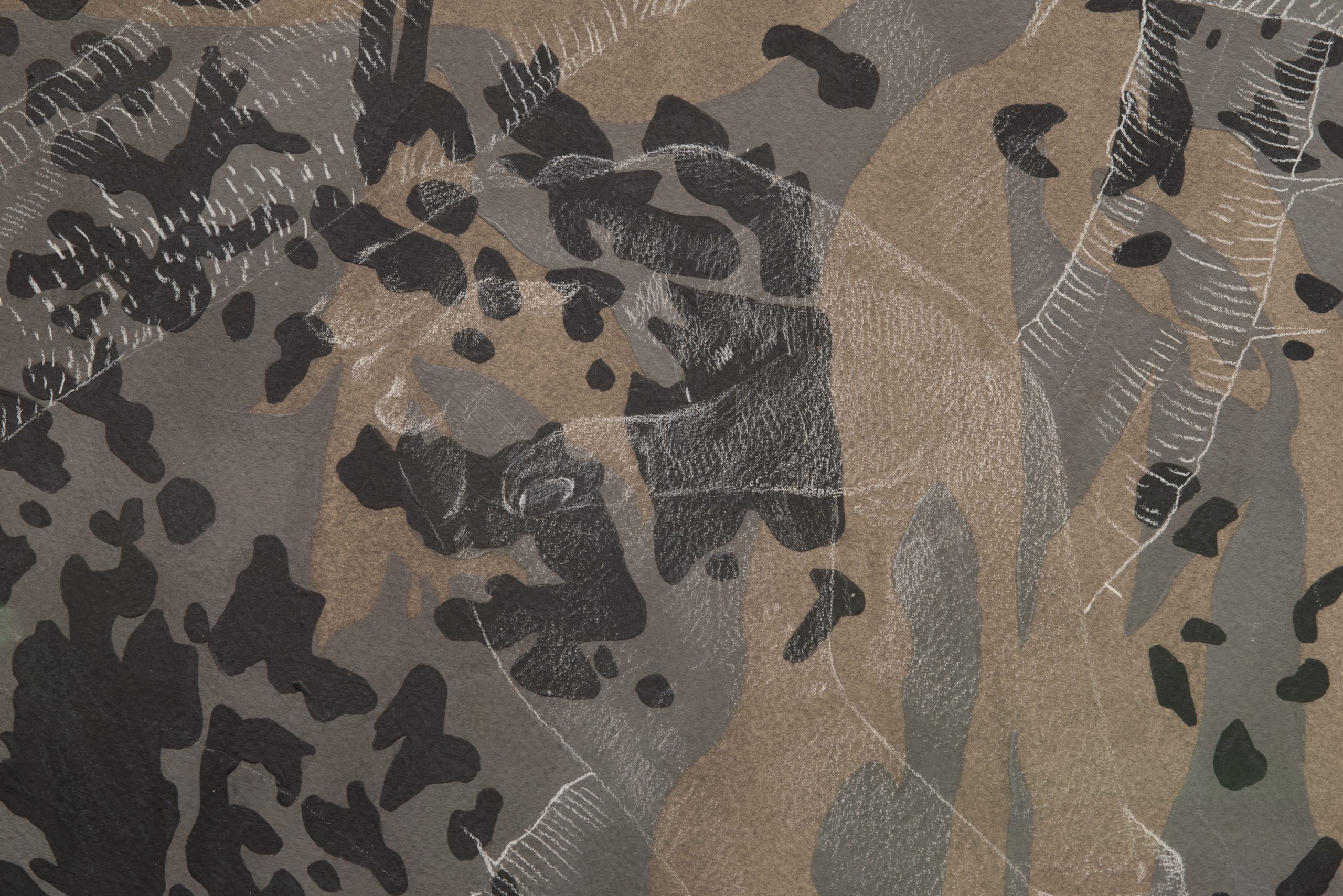

David Antonio Cruz (b. 1974, Philadelphia) received his BFA in Painting from Pratt Institute and his MFA from Yale University. He also attended Skowhegan School of Painting and Sculpture and completed the AIM Program at the Bronx Museum, New York. Recent solo exhibitions include Sugar Hill Children’s Museum of Art and Storytelling, New York, NY (2024); Institute of Contemporary Art Philadelphia, PA (2023); Galleria Poggiali, Florence, IT (2023); and moniquemeloche, Chicago, IL (2024, 2021, 2019). His work is in the collections of the Newark Museum of Art, Newark, NJ; El Museo del Barrio, New York, NY; Institute of Contemporary Art Boston, MA; 21c Museum Hotels, Louisville, KY; Pierce & Hill Harper Arts Foundation, Detroit, MI; Tufts University, Medford, MA; The Philbrook Museum of Art, Tulsa, OK; and Green Family Art Foundation, Dallas, TX. Recent Residencies and fellowships include Joan Mitchell Artist-in-Residence, New Orleans, LA (2025); Anderson Ranch Arts Center, Snowmass Village, CO (2024); Villa Bergerie Art Residency, Laguarres, Spain (2023); the Joan Mitchell Foundation Painters & Sculptors Award (2018); Neubauer Faculty Fellowship, Tufts University, Boston (2018); BRIC Workspace Residency, Brooklyn (2018); Gateway Project Spaces, Neward, NJ (2016); and the LMCC Workspace Residency, New York (2015). Cruz is a 2024 Outwin Boochever National Portrait Competition prizewinner. Cruz lives and works in New York City, where he is the Assistant Professor of Visual Arts at Columbia University.
View more at cruzantoniodavid.com.
Finding Safe Harbor
by Kaylee Lass
David Antonio Cruz is a multidisciplinary artist exploring the intersectionality of queerness and race, celebrating chosen family, and honoring not just where we consider home but who we consider home. Incorporating literature, language, and sculptural elements, his work engages portraiture as a place of permanence and a form of resistance to normative conventions. In his exhibition entitled hauntme, Cruz highlights companionship as wayfinding to empowered authenticity and safe harbor in the people we choose to surround ourselves with.
The feeling of being haunted often holds the weight of a tangible discomfort, whether from physical spaces holding powerful histories, the violence of exclusionary social structures, the loss of loved ones, or the struggle to let go of past mistakes. With hauntme, Cruz encapsulates these shadowy feelings of being haunted yet also teases us to leave a mark in the memories of others–a reminder that we, too, can be haunted by moments of uncontrollable laughter, dancing with strangers, and knowledge shared. These hauntings become a stain on our consciousness, developing who we are and how we see ourselves and the world around us.
Hauntme brings David Antonio Cruz’s drawing practice to the forefront. Through layers of ink washes under silhouettes of maps, foliage, and whispers of wax pencil figure drawings, Cruz invites viewers to spend time getting to know the people and places within, revealing more with each careful look. The layers become a woven collective, unable to be separated. Hidden among the layers are the voyages of personal histories often not spoken aloud, beckoning a moment of reflection and meditation and, at times, suggesting routes to safety.
These grayscale meandering patterns of foliage and limbs first appeared within David Antonio Cruz’s playful and vibrant paintings of chosen family, which center Blacl, Brown, and queer bodies in the Western art historical canon of seated portraiture, a genre from which they were often erased. The series began during the pandemic to counter a heightened time of isolation through the celebration and documentation of queer families. Cruz initiated conversations with friends across the country, asking them to share what chosen family means to them. The conversations grew to include dinners among chosen family members, ultimately leading to a space of dress-up, play, and posing.
Prior to these gatherings, Cruz creates collage studies, sculpting unconventional intimate poses in which the individuals are lounging and intertwined, representing the support system of these non-biological bonds. Afterward, Cruz paints from reference photographs and imagined scenes to build the world around them, including seating formed to house and hold them, distortions revealing touch and imperfect memory, and wallpaper and textiles referencing landscapes connecting the individuals to place and time.
The exhibition culminates by immersing the viewer in a wallpapered room adorned with chandeliers. As if living within one of Cruz’s drawings, the fixtures cast shadows over all who indulge in this space of decadence. At the center of the room is an ottoman upholstered with fabric designed by the artist as a place to pause. Cruz created the multilayered wallpaper in response to a recent visit to Charleston. Familiar palmetto fronds, Spanish moss, and winding limbs of live oaks blend with repeated refractions of a tufted Victorian sofa one might encounter in a historic house museum, roped off and untouchable. Embedded throughout are fragments of motifs from etchings by Francisco Goya created during times of war and societal collapse in Spain at the turn of the 19th century. In conversation with the past, the environment considers lineage, the fragility of time, and ongoing race and wealth disparities.
Central to the room is a painting of chosen family at ease and entangled in each other. Whenthechildrencomehome (2023) grounds us with hope for an opulent future prioritizing the liberation of radical rest. Rest is impossible without support; support in the interwoven structures of respect, security of self, and love that brace across thresholds. The painting’s perspective is shifted to an aerial view and from above, the couch appears much like a raft adrift, perhaps returning to or seeking home. Cruz’s work reminds us that “home” may be a physical space for some but can also be found in each other.
A meditation, an exhale, a release–David Antonio Cruz’s exhibition hauntme creates a space where there’s a seat for everyone. Find your seat. Find your family. Find your home. Rest.